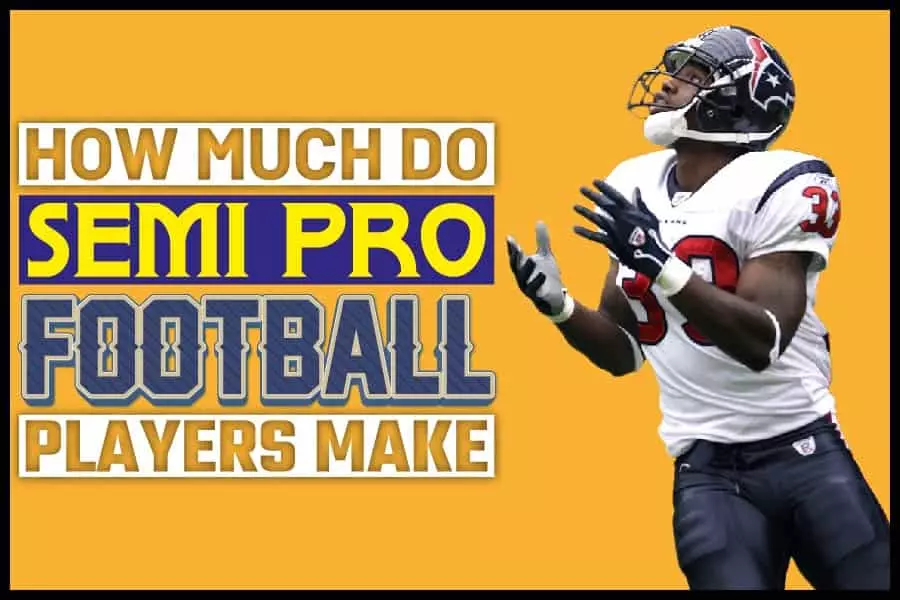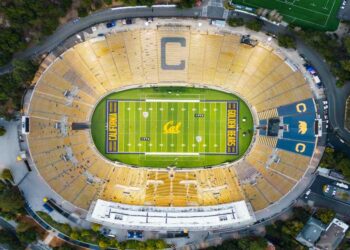Athletes, both male, and female compete in semi-pro leagues only for the love of the game. The term “semi-pro” might sound impressive, but it refers to non-professional.
Semi-pro football teams consist of a diverse group of athletes, ranging from former high school standouts who did not attend college to ex-pro and college athletes. Not only are they not compensated, but many participants are required to pay dues to join.
Read on to find out how much payment they receive.
What Are Semi-Pro Sports?
Semi-professional sports, also known as semi-pro sports, are those in which athletes do not play full-time but receive compensation somehow. Semi-professionals are not amateur players since their team regularly pays them, but they get a far lower rate than full-time pro players.
Consequently, semi-professional players typically work full-time somewhere else or pursue full-time employment. A semi-professional player or team can also represent a company or business where only employees can play.
It is called semi-pro in this scenario since their employer compensates them for their regular job rather than for playing for their sports team. Unlike professional football, which is played across the United States, semi-professional leagues are more regional and may follow various rules.
They, however, still have championships and rivalries, which are very important to the players. The semi-pro status is not the same around the world. Every country’s labor code determines it (labor law) and the specific requirements of every professional sports league.
How Much Do Semi-Pro Football Players Make?
Semi-Pro Football players in the United States get paid between $10,141 to $178,322, with a median income of $32,779. Semi-Pro Football players are paid between $32,779 and $81,278, with the upper 86 percent earning $178,322.
The most professional of the semi-pro leagues, Arena Football, compensates its players at an average payment of $21,760 to $32,740 per year. A beginner Arena football player will be paid from $17,920 to $26,880.
The majority of semi-pro sports leagues don’t pay their players, even though Arena Football does. On the other hand, most leagues compel their players to pay membership fees, and some even have community service or other obligations.
As a result, semi-pro football leagues are viewed as a chance for people who enjoy playing the game to keep playing at a higher level into adulthood instead of as a pathway to the NFL. Players need to budget for their equipment as well as travel expenses for distant games. If they can, semi-pro players can get sponsors to meet the costs of membership and travel.
The semi-professional football season usually starts in April and lasts until the end of July. However, leagues with arenas in hotter climates may start sooner. Often these semi-pro leagues train 2 to 3 nights a week during the off-season, scheduling practice according to their players’ work schedules.
10 Things You Should Know About Semi-Pro Football
The Tryouts
Semi-pro football season typically begins in April and concludes in July. Many teams lease playing grounds, like high school stadiums. This, however, means that they are unable to play whenever the school’s schedule requires the field.
Teams in areas that have hotter climates often begin their seasons a few weeks earlier. To try out, most organizations demand that players be at least 18 years old.
Although every league has its unique calendar, tryouts are typically held throughout the winter, especially in December and January. Pre-tryout training programs for overall conditioning and weight lifting may be available from some semi-pros.
Essential Equipment
For semi-pro football, you require extra body equipment in addition to your uniform. You will need a helmet, shoulder pads, and a mouthguard. Investing in a high-quality helmet is quite crucial.
Concussion-prevention measures are built into modern-day football helmets to keep your head protected. Shock absorbers, a sound ventilation system, foam reinforcements around the sides, and polycarbonate shells, where most concussions occur, are all features to look for in a helmet.
If you get shoulder pads that are not a proper fit, they won’t provide any protection. You should also know that you might have to pay for your equipment when it comes to semi-pro football. However, you might be fortunate enough to be on a team that provides some gear.
Training For Semi-Pro Football
Conditioning ought to begin between September and October if you’re preparing for semi-pro football. Although it’s referred to as “semi-pro,” it’s still full-contact football, which means that there will be impacts as intense as those seen in college and professional football.
You must be in the ideal physical shape attainable for your body to handle that kind of forceful impact. Enjoy the benefits of any training camps offered by the team or organization you’re auditioning for. If not, go to the gym and work on your stamina.
Even though most people think that you should only focus on strength training, this is not true. You need to include cardio exercises. Because some teams are smaller or lose players over the season, you can find yourself playing both defense and offense. This suggests that you have to work on increasing your endurance.
Cardio Training
It’s important to remember that team tryouts differ in structure and might even occur in stages over a couple of weeks. This is mainly done so that coaches can measure beginning fitness levels and track progress.
Sometimes teams may require you to run about 2 miles continuously without stopping to see how fit you are. Find out what aerobic abilities the coaching staff are seeking and how they will be evaluating recruits for the team you’re trying out for.
This kind of information can be found through team informational sessions. Cardio is only one component of physical fitness, but it is a critical one for semi-pro football.
Weight Lifting
Although semi-pro football is not the same as professional football, it is a significant upgrade from flat football and leisure leagues. The blows are genuine, and players can be ferocious competitors as well. You must be able to keep up, especially if you’re an older player.
The capacity to make an impactful hit on a person is an essential component of football. Make sure to inquire about how strength will be evaluated throughout tryouts to help you better prepare in this area.
Power in the lower, upper, and core body should work to your advantage during the season. If you are interested in joining semi-pro football, come up with a strength conditioning program that is well balanced and stick to it before going for tryouts.
A Balanced Diet
It’s essential to consume a well-balanced diet to stay in shape, although football players also have to increase their protein intake to help rebuild muscle fibers that have been broken down.
Whether you’ll have to lose or gain weight is determined by your current physical condition. If you are overweight, you’ll have to lose some weight to keep up when playing. After you’ve prepped your body from within, you can think about what gear you’ll require.
Plyometric Exercises
Plyometric exercises might help you become more agile. The connective tissue and muscles are stretched and shortened quickly during these activities. This means that elastic energy accumulates in the muscles, allowing you to generate additional force when needed.
This is yet another approach to demonstrate to the coaches that your body is in good condition.
Plyometric workouts include hopping, jumping, and weaving.
Long leaps from a standing position and vertical jumps should be practiced. Low cones or even other small items must be jumped over. Add some runs, and you’ll have a solid foundation for tryouts.
Membership Fees And Other Costs
Most teams want you to bring your equipment and pay a membership fee in addition to that. The expenses vary by unit and can run into the hundreds of dollars for every season.
Some teams have a community service mandate, where all team members need to do some community work. You might have to allocate additional time to meet this obligation, whether that’s a few hours a month or an event that happens once in a while.
Travel is an unavoidable element of the game, and players should plan on covering the majority of their travel expenses for the seasons they are away.
Time Commitment
Semi-pro football has the potential to take up a lot of time, but those who enjoy the sport will not mind. It would be best if you planned to practice at least two to three times a week after work. Every practice session can run for a couple of hours at a time.
Other than putting in the time to practice, you will also need to allocate time to watch previous games and films about tactics you can use while on the field. Because games are held on Saturdays, football may take up your entire weekend, especially if you’ll have to travel. Once your team advances to the playoffs, you may have to travel more throughout the season.
Conclusion
Joining a semi-pro squad will not guarantee you a spot in the NFL or the CFL. Semi-professional players primarily compete for the passion they have for the game. A few players have made it to the NFL.
However, these are mostly guys who have been cut from the NFL but have spent some time honing their skills before getting called back up. Nonetheless, these occurrences are exceptions to the general rule. Sometimes players leave the NFL but want to keep playing, so they join a semi-pro league to keep their feet in the game.







